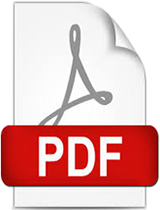
Report
Public Expenditure Review of the Palestinian Authority : Towards Enhanced Public Finance Management and Improved Fiscal Sustainability
Attachments [ 0 ]
More Details
The difficulty of pursuing a conventional market-oriented development strategy in the Palestinian territories led in the early part of the 2000s to a second-best reliance on public sector employment and wage bill expansion to boost aggregate demand. The main objective of this Programmatic Public Expenditure Review (PER) is to inform policy and institution-building efforts of the Palestinian Authority (PA) and its donor partners about improving the sustainability of public expenditures and the efficacy and efficiency in the provision of essential public services.In particular, this PER aims to provide an assessment of public revenue and expenditure policies offering specific policy and institutional measures to reduce the size of the Palestinian territories fiscal deficit and make it more sustainable.The fiscal situation of the Palestinian Authority is not sustainable.The difficult fiscal situation facing the Palestinian Authority today results from a unique confluence of challenges.As this report will argue, there is considerable further scope for reforms that would raise additional tax revenues, and reduce expenditures without compromising the quality of public services or negatively impacting public welfare.However, the PER notes that there are limits to what can be achieved by PA fiscal policy alone.The PER is organized as follows: Chapter one provides an overview of recent macroeconomic and fiscal developments; it also contains a brief assessment of priority fiscal policy issues facing the PA, and serves as an introduction to the in-depth analysis of the issues that follow in subsequent chapters. Chapter two analyzes the factors driving the size of the PA’s wage bill, and shows how these can be tackled. Chapter three reviews expenditures in the public health sector. Chapter four analyzes the Palestinian public pension system, and looks into how its sustainability can be assured. Chapter five assesses the quality of intergovernmental fiscal transfers, including net lending transfers. Chapter six reviews the way in which public investment projects are planned and implemented, and identifies steps to improve investment quality. Further details on health and pensions are provided in the annexes.
Comments
(Leave your comments here about this item.)